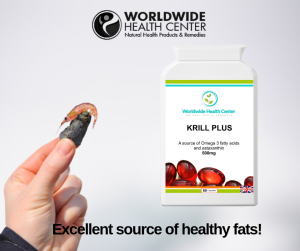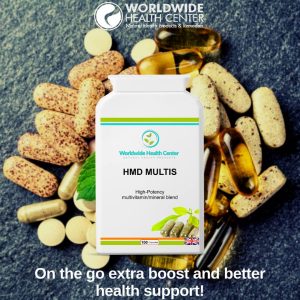Need help? Email us:
- AMINO ACIDS
- Antioxidants
- Blood Sugar Regulation
- Bone and Joint Repair
- BOOKS
- Brain Food & Energy Supplements
- Candida Support
- Cardiovascular Support
- Cholesterol
- Constipation Relief
- Dental Health
- Detox
- Digestive Support
- Eye Support
- Fatty Acids
- Gut Health
- Hair Mineral Analysis
- Heavy Metal Detox
- Herbal Tinctures
- Immune Support
- Liver Support
- METABOLIC TYPING
- Multivitamin & Mineral
- Natural antimicrobials and parasite remedies
- Natural Diuretic
- Probiotics
- Prostate Health
- Tachyon Products
- Uncategorized
- VITAMINS
- WEIGHT LOSS
VACCINATION: RISKS AND ALTERNATIVES

I guess the question of vaccination and immunization doesn’t really occur to us until we have children. Certainly, this was the case for me. Now that I have four children it is a very serious question, which I have researched and would like to share with you some of my notes and thoughts.
We are led to believe by the medical dictorates and the media that immunization is a safe, scientific procedure, which protects and safeguards health. However, there is evidence that much immunization is not safe in the short term; that it offers far less protection than might be imagined, and that the long-term effects of certain forms of immunization may constitute a major health hazard.
The argument is that vaccination will provide protection against infectious disease without the disadvantage of suffering its distressing symptoms and possible residual effects.
ACTUAL DISEASE TRENDS
One of the most common claims made by advocates of routine vaccination is that the procedure is responsible for eliminating common infectious diseases from communities that have been well vaccinated. This argument is not supported by information compiled from official Government figures obtained directly from the Health Departments of the United States, Great Britain, and Australia for the following infectious diseases:
Whooping cough, Measles, Poliomyelitis, Tetanus and Diphtheria. If one where to examine these figures and diagrams, it is quite clear that the deaths from these diseases were virtually eliminated BEFORE vaccination programmes were introduced. The downward trend did continue after the vaccinations were introduced, but the trend was on the down path anyway.
Certainly, it cannot be claimed that vaccination has been responsible for the elimination of infectious diseases, the credit for which must be largely attributed to improved sanitation and waste disposal, personal hygiene and nursing care, and the reduction of severe nutritional diseases in the countries considered.
ROUTINE VACCINATION – A SUMMARY OF RISKS
As one reads the relevant literature on vaccination risks based on scientific research, it is clear that anyone who says vaccination is a totally safe and effective procedure is either a fool or a liar – and probably both. Pharmaceutical lobby groups fall directly into this category of people.
Dr. Coulter and Dr. Fisher have thoroughly and accurately researched and documented the risks of the Triple Antigen vaccine. They list fourteen significant short term side effects of the DPT vaccine, which can also apply to other vaccines too:
1. Skin reactions
2. Fever
3. Vomiting and diarrhoea
4. Cough, runny nose, ear infection
5. High pitched screaming, persistent crying
6. Collapse or shock-like episodes
7. Excessive sleepiness
8. Seizure disorders – convulsions, Epilepsy
9. Infantile spasms
10. Loss of muscle control
11. Inflammation of the brain
12. Blood disorders – Thrombocytopenia, Hemolytic Anaemia
13. Diabetes and Hypoglycaemia
14. Death and Sudden Death Syndrome (SIDS)
In addition to these short-term side effects, Coulter and Fisher list three major areas of possible long term damage, including:
1. severe neurological damage
2. brain damage, learning disabilities, and hyperactivity
3. allergy and hypersensitivity
Possibly the most disturbing aspect of their book is the number of reported case histories where doctors administering vaccines completely ignored patients’ previous reactions to vaccination, in some cases resulting in death. This further reinforces that ultimately the parents are responsible for their children’s health; ignorance is not inductive to good parenting.
Other researchers have shown that children who received the pertussis vaccine were 5.43 times more likely to develop asthma in later years, over twice as likely to have ear infections, and significantly more likely to spend longer periods in hospital than those who had not received the vaccine. Thus, clear evidence is emerging of a long term weakening of the immune system due to vaccination.
Dr. Robert Gallo, the US expert who first identified the AIDS virus, raised the possibility between the spread of AIDS in Central Africa and the World Health Organization’s (WHO) Smallpox vaccination campaign (see HERE for more information). WHO figures show that the greatest spread of the HIV infection coincides with the areas receiving the most intense vaccination programmes. This may also explain why the disease in Africa is more evenly spread between males and females than in the West.
Dr. Archie Kalokerinos and Glenn Dettman, Ph.D. undertook one of the most important pieces of research regarding vaccination programmes, in their work with aboriginal children in Australia. Aboriginal infant death rates had reached an unprecedented level of up to 500 out of every 1,000 babies. The death rates had increased dramatically during the early 1970’s. The areas Minister of Interior called in Dr. Kalokerinos who began to investigate. He discovered that herd immunity, without prior examination, was resulting in babies dying due to being vaccininated when they were severely nutritionally undernourished or had a cold or infection.
Summaries of the long-term side effects are as follows:
1. Severe neurological damage
2. Brain damage
3. Allergy and hypersensitivity
4. General damage to the immune system
5. Slow viruses
6. Genetic abnormalities – “Jumping Gene” phenomenon
7. Viral transference
8. Trigger mechanism for immune system diseases
9. Dynamic (miasmic) changes
I have personally seen a number of parents who brought their children to me with similar problems (ADD, Autism, Autistic symptoms, cognitive difficulties, etc.), reporting a “sudden change” just after vaccination. All these children tested positive on the VEGA bio-dermal screening for “vaccination stress.”
HOW EFFECTIVE ARE VACCINATIONS?
It would be nice to think that vaccinations were 100% effective, but the research shows otherwise. Studies measuring “secondary attack rates” – the percentage of other family members infected as a result of definite exposure to a family member with Whooping Cough showed that the efficacy of the vaccine ranged between 59.6 to 80.5%.
Professor Stewart of Glasgow University, UK, head of Community Medicine, states that in 1974/5, and 1978/9, outbreaks in the UK, and in 1974 in the outbreaks in the USA and Canada, the proportion of children developing whooping cough who had been fully vaccinated was between 30 and 50 per cent. Dr. Stewart goes on to conclude that the risks of vaccination to new born babies are as great as those of actually catching the disease itself.
In 1993, Japanese health authorities discontinued the use of the MMR vaccine. One reason was that the vaccine was causing Mumps in recipients. Initially, side effects from the vaccine were predicated as 1 in 100-200,000, but in practice, however, reactions were found to be frequent as 1 in 300.
Roberts and others examined an outbreak of Measles and found that the MMR vaccine was not only ineffective, but increased the severity of the disease. “Symptoms were equally common among immunised and non-immunised subjects. However, significantly more immunised boys than non-immunised boys reported fever, rash, joint symptoms and headache.
SUMMARY OF PROBLEMS ASSOCIATED WITH ROUTINE VACCINATION
There are three basic flaws in the theory and practice of vaccination:
1. The primary cause of disease is not antigenic since not all unvaccinated or previously unexposed people become infected when similarly exposed to an identical antigen. The disease initially results from a sensitivity, which causes inability to cope with invading antigens. This raises the question regarding why some people have natural immunity while others do not. Many other factors are involved in immunity, including genetic characteristics, placental transfer, breastfeeding, as well as individual health, nutritional status, and emotional response to stress.
2. Injections of antigens do not necessarily produce the same results in all individuals, and exceptions can be fatal. At best, these injections increase toxins in the body, which may cause some of the many side effects associated with vaccination. These side effects are aggravated by the relatively massive doses of antigen administered compared to natural exposure, plus chemicals such as Aluminium Phosphate and Thimersol used in the vaccines, as well as the fact that the injected material enters the bloodstream almost directly, bypassing the outer or primary immunological defences. In addition, the protection given by injected antigens is usually temporary, whereas natural exposure to infectious diseases virus generally produces permanent immunity.
3. Repeated injections of antigens tend to both sensitise the recipient to the disease and destroy the vitality of the immune system on a number of levels. This has been scientifically established, as noted in references to various medical practitioners and researchers in previous sections. Natural Therapists believe that damage also occurs on the inner, dynamic level from which an individual derives their entire physical and emotional health.
PREVENTION IS BETTER THAN CURE!
The best position that advocates of routine vaccination can take is that the program offers some protection and that the known side effects (and yet to be demonstrated side effects) are worth the risk. Since this is obviously not an optimum position, the question: “Is there a genuine alternative available?” must be asked. And the answer is a definite YES.
As parents, the best protection you can give your child involves:
1. Ensuring adequate ongoing nutrition for yourselves and your children, including a balanced diet, no more than a moderate alcohol intake, and no smoking.
2. Breastfeeding, where possible, to around nine to twelve months providing an emotionally stable home environment for your children
3. Ensuring safe and effective treatment if an infectious disease is contracted [Dr Shepherd wrote that, during local outbreaks of disease, conventional practitioners would complain that she always had the “easy” cases; her reply was that her method of treatment – Homoeopathy – made her cases appear easy].
4. Constitutional treatment that will elevate general vitality and immune competence.
If desired, parents may support the above measures with Homoeopathic medicines as preventatives against these infectious diseases.
THE ALTERNATIVES TO ROUTINE VACCINATION
Vaccines are more toxic than homoeopathic medicines: This point is generally accepted; in fact, many doctors criticize homoeopathic substances because they do not contain any molecules of the original substance used. They say that “nothing” is there, so “nothing” cannot be toxic. Vaccines, however, contain a number of toxic substances. For example, the triple antigen vaccine contains molecules of diseased material modified with formaldehyde together with an adjuvant (usually aluminium phosphate) and a preservative (usually thimersol, a mercury-based chemical).
The vaccine efficacy of 75-95% may be compared to the single measure of effectiveness of the homoeopathic method derived from the 1994 analysis, being 89%, as confirmed by the latest ten-year survey (1997). This figure not only gives a general indication of efficacy, but (more importantly) supports the historical experience with the homoeopathic method over the last 200 years.
Homoeopathy rapidly gained popular acceptance when it proved successful in treating the infectious diseases sweeping through Europe, such as:
1. In 1813, Hahnemann achieved a success rate of 100% in treating 183 Typhus patients; at that time Typhus was considered incurable.
2. Scarlet Fever was effectively both treated and prevented by Hahnemann using the remedy, Belladonna.
3. During the European Cholera epidemics of the mid-1800’s, the death rate was between 54% and 90%, while the rate amongst persons who received Homoeopathic treatment was between 5% and 16%.
4. During the 1918-1920 Influenza (Spanish Flu) epidemic in the United States, the mortality rate was around 30%; the mortality rate among individuals treated Homoeopathically was less than 1%.
A SPECIFIC HOMEOPATHIC PROGRAM
We will now examine the programs developed by the Issac Golden over the last ten years, who wrote the excellent and comprehensive book “Vaccination? A Review Of Risks and Alternatives.” As stressed previously, no program, orthodox or alternative, can be guaranteed 100% effective, but it is essential that we establish a reliable guide to the relative effectiveness of vaccination and homoeoprophylaxis.
It must be emphasised that the methodology of disease prevention and the remedies used in the kit are not new, having been used for nearly 200 years. However, Issac Golden, following extensive research in the Homoeopathic literature, and subsequent personal clinical experience developed the particular programs.
BASIC PROGRAM FOR PROTECTION FROM BIRTH (1993)
AGE GIVEN REMEDY
1 month Pertussin(200)
2 months Pertussin*
4 months Lathyrus Sativus(200)
5 months Lathyrus Sativus
6 months Haemophilis (M)
7 months Haemophilis* Sativus*
9 months Diphtherinum(200)
10 months Diptherinum*
11 months Tetanus Toxin(200)
12 months Tetanus Toxin*
13 months Pertussin*
14 months Morbillinum(200)
15 months Morbillinum*
16 months Lathyrus Sativus*
17 months Haemophilis*
19 months Parotidinum(200)
20 months Parotidinum*
22 months Diphtherinum*
24 months Tetanus Toxin*
26 months Lathyrus
28 months Haemophilis*
32 months Pertussin*
41 months Tetanus Toxin*
46 months Haemophilis*
50 months Diphtherinum*
54 months Morbillinum*
56 months Lathyrus Sativus*
60 months Tetanus Toxin*
—————————————————————-
* Triple doses to be used
Note: The disease-remedy relationship (including possible substitutions) is as follows:
DISEASE NOSODE SUBSTITUTE REMEDY
————————————————————-
Whooping Cough Pertussin Cuprum Met. Diphtheria Diphtherinum Gelsemium Measles Morbillinum Pulsatilla Poliomyelitis Lathyrus Sativus Lathyrus Sativus Tetanus Tetanus Toxin Hypericum Mumps Parotidinum Rhus Tox Rubella(German Measles) Rubella Pulsatilla Hib Haemophilis Arsenicum Album.
————————————————————-
A supplementary program has also been developed, which may be used in conjunction with or instead of the basic program.
The reason for using both programs is that, although successful use of the remedies in the basic program has been established, no system of protection can be guarantied 100% effective. In the event of definite exposure to a source of infection, parents may wish to give their child additional protection at that time. These two programs comprise the third Homoeopathic Kit, which was first released in 1993.
Supplementary Program for Protection When Exposed to Infection
DISEASE ADMINISTRATION OF REMEDY
—————————————————————–
* Whooping Cough- Pertussin (200c) twice weekly for 3 weeks after contact with carrier.
* Tetanus- Three doses of Ledum Palustre (30c) daily for 3 days after breakage of skin.
* Diphtheria – One dose of Diphtherium (200c) weekly for 4-6 weeks during an outbreak of Diphtheria.
* Measles- Morbillinum (200c) weekly during an outbreak, for 3 weeks.
* Mumps- Parotidinum(200c) weekly during an epidemic or after contact with carrier.
* Rubella – As natural immunity is the most certain, it is better to allow (German Measles) healthy children to acquire this mild disease. If protection is required, the Rubella Nosode (200c) or Pulsatilla (30c) may be used twice weekly for two weeks.
* Haemophilia – Haemophilis (1M) every 2 weeks during an outbreak (Hib).
—————————————————————–
Most of the Homoeopathic medicines listed above are called ‘nosodes’. These are potentised preparations of diseased substances; for example, the nosode Pertussin is the potentised expectoration from a patient with Whooping Cough. However, it is not essential to use Nosodes.
As discussed previously, when a person acquires immunity through natural exposure to a virus, the actual quantity of virus is minute, yet the change is effected on a dynamic level, and subsequently on the physical level. In Homoeopathy, the effect is similar in that changes initially occur on a dynamic level. The Homoeopathic remedy, Pertussin, is the virus potentised to a purely dynamic and non-material degree. Unlike vaccines, therefore, Homoeopathic preparations copy the processes of Nature, with similar results in practice. Further, it must be stressed that vaccination is not a type of Homoeopathic (as has been suggested by some).
We are using medicines of energy, not crude substances like those used in vaccines. The remedies are selected using the Law of Similars. The ignorance of such attacks is made more obvious considering that Homoeopathic medicine is first derided because ‘nothing is there’, and then criticised as being ‘toxic’. Logical and scientific criticism indeed!
If the reader really wants to get to grips with this complex subject, I will give a few of the references that I have used for this brief newsletter. There are many further details and studies that I recommend the parent or practitioner who truly wants to get to grips with vaccine alternatives to read:
1. Issac Golden – Vaccination? A Review of Risks and Alternatives (5th edition)
2. Leon Chaitow – Vaccination and Immunization: Dangers, Delusions and Alternatives
Dr. George J Georgiou, Ph.D.,D.Sc (A.M).,N.D.
[email protected]
Important Links

Dr. George J. Georgiou
Dr. George J. Georgiou, Ph.D., N.D., D.Sc (AM), M.Sc., B.Sc, is a world-renowned expert in the field of holistic medicine and detoxification. As the inventor of the highly acclaimed Dr. Georgiou's Heavy Metal Detox Protocol, and the main product, HMD™ (Heavy Metal Detox), he has revolutionized the approach to natural heavy metal detoxification. With over 35 years of experience in natural medicine, he has authored 23 books, including the comprehensive guide 'Curing the Incurable with Holistic Medicine,' which offers invaluable insights and over 700 scientific references. Dr. Georgiou's groundbreaking work is sought after by individuals and practitioners worldwide through his Da Vinci Institute of Holistic Medicine and Da Vinci Holistic Health Center based in Larnaca, Cyprus.







